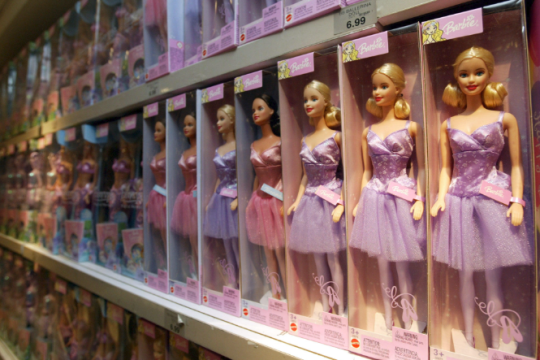
Even after cutting
approximately 2,200 jobs in the wake of poor Q2 sales, Mattel still has more decisions to make
regarding its future. It’s clear that the demise of Toys ‘R’ Us has impacted Mattel enough to make such drastic changes
in a single quarter, and raises the possibility that the toy manufacturer
relied too heavily on the retailer for its success. Should Mattel have done
more to partner with other retailers in advance of the Toys ‘R’ Us liquidation?
And should direct-to-consumer (DTC) sales serve as a larger component of the
company’s offerings?
The RTP team
discusses whether more brands should supplement (or bypass altogether) traditional
store sales, particularly if the retailer isn’t holding up their end of the
bargain. The editors share steps Mattel and other brands should take to keep
damage to a minimum if a major retail partner is performing poorly.
Debbie Hauss, Editor in Chief: As digital commerce has grown, brands
have definitely been moving toward more direct-to-consumer selling, both online
and in their own stores. One significant challenge is maintaining a good
relationship with store partners while becoming a competitor of sorts. Another
challenge is maintaining brand consistency as well as marketing and
merchandising consistency. If brands can manage those challenges effectively,
it’s smart to expand the marketplace by selling direct-to-consumer. It also may
become even more relevant as AI/chatbots begin to recommend products to
consumers.
Adam Blair, Executive Editor: The recent Mattel job cuts, the
latest (though probably not the last) aftershock from the demise of Toys
‘R’ Us, spotlight the dilemma many major brands face in today’s retail
climate. Particularly in the toy vertical, brands really need a physical space
where kids and parents can see their products in action in order to sell
effectively. For economies of scale, they need the national footprint and
advertising clout that only a major retailer can provide. Mattel at least has a
strong brand name that it can leverage to reach consumers via other retail or
direct-to-consumer channels, but what about the dozens of smaller, lesser-known
toy companies that relied on Toys ‘R’ Us for shelf space and exposure? To at
least partially fill the gaping hole left by Toys ‘R’ Us, brands large and
small will need to do what everyone needs to do: use the customer data they
have to target prime shopper groups, and then personalize their marketing
efforts.
Glenn Taylor, Senior Editor: While DTC seems like a bright
option for brands seeking to pave their own way toward the consumer, it’s not
all rosy on that front either. With Amazon crawling into more categories and
more retailers making the jump to private label goods, brands will be seeing
increased competition on both the retail and DTC sides. A CPG giant such as
Procter & Gamble can have complete control over its massive array of
brands, but the company recently
saw sales in its grooming division (namely Gillette products) drop 3% after a price cut. In trying to combat weak
demand, P&G is changing course for next year in other venues, raising
prices 4% for Pampers and 5% for Bounty, Charmin and Puffs.
Whether these products are being sold within a store or on their own web site,
I don’t think either option would make a difference when it comes to demand.
For name brands like Mattel or smaller brands trying to get their name out
there, it’s all going to depend on the effectiveness of that product and the
ability to engage with the consumer, regardless of sales channel.
Bryan Wassel, Associate
Editor:
While it may be tempting for Mattel to deliver directly to customers, a
consumer-focused fulfillment network and a retailer-focused fulfillment network
are very different undertakings. Many manufacturers have seen success with
their direct-to-consumer options, but outside of brands that were set up with
this model in mind, the direct business is only supplemental to sales through
standard channels. Mattel in particular is suffering from a cash crunch due to
the collapse of one of its major customers, which makes the logistical
challenges even more difficult to tackle. However, the fall of Toys ‘R’
Us and its ripples throughout the toy industry could be a warning to
other manufacturers. Seeing an example of what could befall their own segment might
encourage these suppliers to put together an alternative system before it’s too
late.






